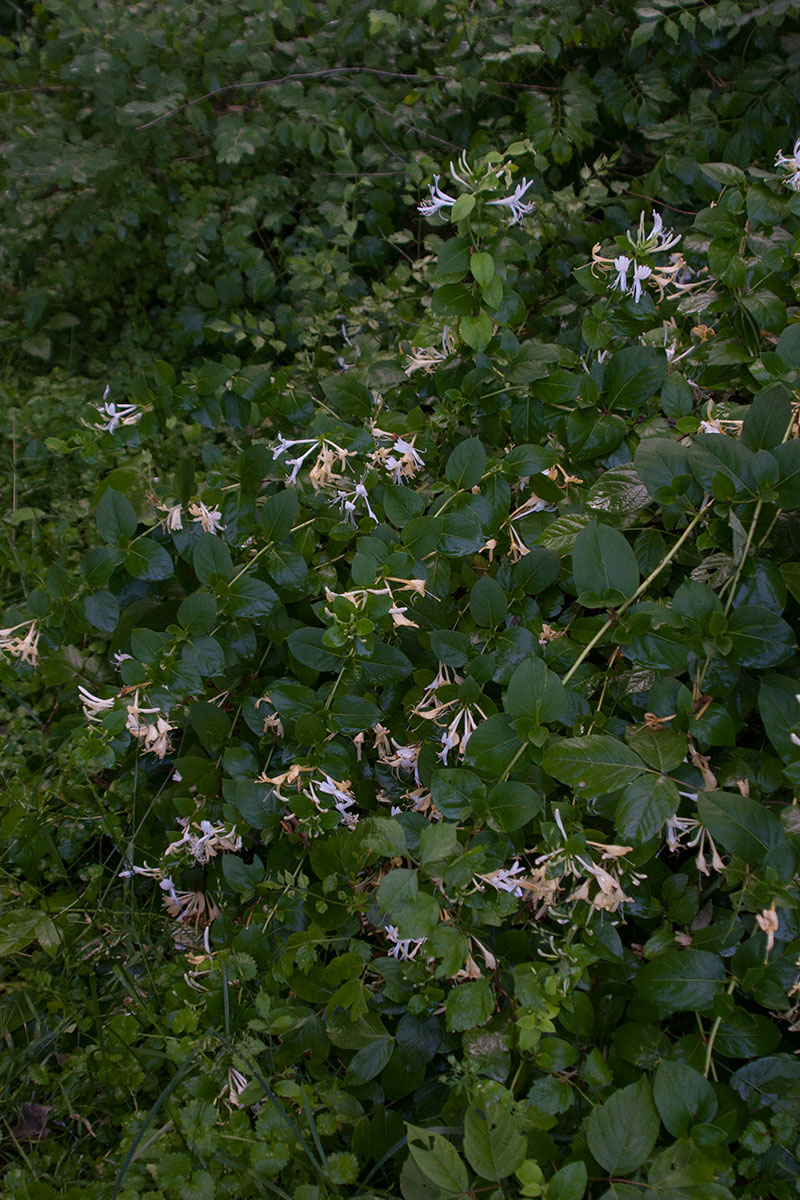
Are you avoiding taking out some invasive weeds just because you aren’t sure what to put in their place? Many a mindful farmer has been there, and there are a couple questions you can ask yourself to make that determination.
First, figure out what it’s doing for you. Is it giving you shade, privacy, flowers, ground cover, a lawn or wildlife habitat? Next, look at the options that provide those same services. Finally, decide on your vision for the space. Would you prefer to open up the area and let in more light? Create a pathway? Fill your yard with fruit and nut-bearing shrubs? Watch a tree grow over the coming decades? Once you’ve got a clear idea of the future of your weed-free space, consider these three main ways of filling the niche the weed was occupying.
Mulch
If the invasive plants you removed were a ground cover, grass or forb, and it was not in a space you want to grow food or flowers, then mulch away. Start with a thick layer of cardboard, and then pile wood chips on top and spread it out with a metal rake. Some arborists will deliver mulch right to your door because they are in the business of removing unwanted woody material. Certain municipalities provide free mulch. Be cautioned that it might be largely composed of yard waste, which could indiscriminately harbor more weed seeds.
If you’ve had a hard time with bermuda grass, pine needle mulch just might do the trick. However, the acidity of the pine will affect the surrounding soil’s pH, so use it with caution. On the other hand, you could take this opportunity to plant those acid-loving blueberry shrubs you’ve always wanted.
Cover Crop

Let’s say that Bermuda grass has overtaken your garden beds and you’re between growing seasons. If you leave the soil bare, it won’t be long before a new invasion is running amok. Replace it with a beneficial plant that will restore needed nutrients in the soil and create a blanket of green—and potentially more colors. You can increase the benefits of that cover crop by choosing some great pollinator-attracting plants. Penn State’s Extension website offers some ideas for cover crops that will attract bees. Peas, clovers, mustards and buckwheat are a few examples of flowering plants that work well. Some cover crops, like wheat, rye, oats and barley can also become green mulches that can are chopped and dropped to the ground and add the benefits of more organic matter right in place.
Native Perennials

The more ecological functions that your weed substitute provides, the better, and it doesn’t get much better than a perennial that is well-suited for the site. Some great resources exist for matching an outgoing non-native with a better choice from the suite of plants that originated here. An example would be replacing Japanese honeysuckle with Carolina jasmine, for the floral aroma and vining pattern. Another possibility is taking out purple loosestrife and replacing it with purple coneflower, aka Echinacea. An added benefit is that it is also a medicinal herb. An invasive tree like the Bradford pear can be replaced by a redbud, and a mimosa tree can be replaced by a sweet acacia.
By making the choice to upgrade your landscape from monocultures of aggressive opportunistic plants into a diverse and multi-faceted oasis of food for humans and wildlife, you just might get some attention from neighbors. Do your best to educate others on the benefits of your design, and share what you learn as you go. To read more about successful urban planning initiatives to reduce lawn, change local ordinances regarding weeds, and encourage native plants in cities, see Wild Ones national website.




